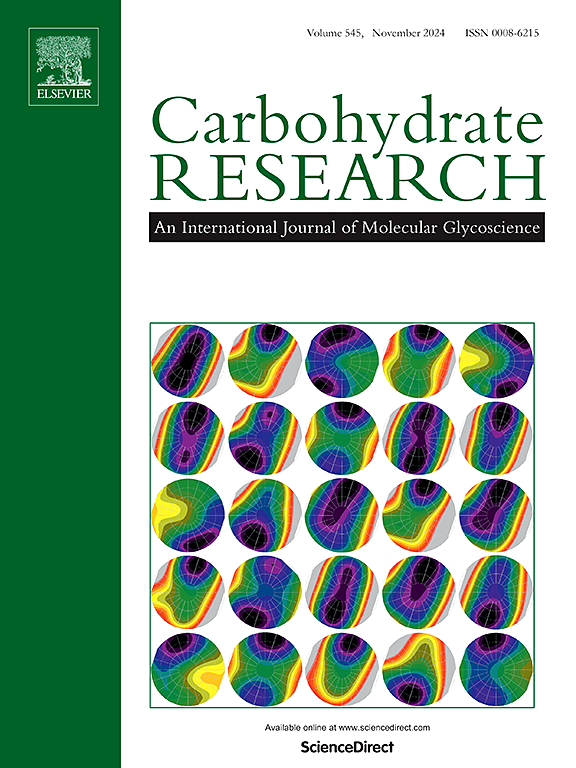Recent advancements in glycopolymer-based sustainable biomaterials for biomedical sensing
IF 2.5
3区 化学
Q3 BIOCHEMISTRY & MOLECULAR BIOLOGY
引用次数: 0
Abstract
Glycopolymer-based biomaterials have appeared as a reliable and adaptable framework for biomedical sensing applications by integrating the bioactivity of carbohydrate moieties with the structural variety of synthetic polymers. These substances enable precise interactions with the biomolecules, such as proteins, enzymes, and pathogens, by resembling the natural glycoconjugates. The recent advancements in glycopolymer synthesis have led us to design highly advanced and functional biomaterials. These innovations include the assimilation of the glycopolymers into nanostructures, conductive matrices, and hydrogels that significantly enhance the sensor's selectivity, stability, and sensitivity. This review highlights cutting-edge developments in glycopolymer-based biosensors for detecting critical biomarkers, such as glucose, proteins, and disease-associated antigens. Glycopolymers are also being studied for their integration into sophisticated sensing platforms, including microfluidic systems and nanostructured surfaces. Recent breakthroughs have concentrated on the development of glycopolymers employing biodegradable and bio-based monomers using green polymerization processes. These advancements have improved the environmental friendliness and biocompatibility of glycopolymers, making them more appealing for long-term biomedical sensor applications. Also, these developments demonstrate the revolutionary potential of glycopolymer-based biomaterials in addressing important healthcare issues.

基于糖共聚物的生物医学传感可持续生物材料的最新进展
通过将碳水化合物部分的生物活性与合成聚合物的结构多样性相结合,基于糖共聚物的生物材料已成为生物医学传感应用的可靠和适应性框架。这些物质通过类似于天然糖缀合物,能够与生物分子(如蛋白质、酶和病原体)进行精确的相互作用。最近在糖共聚物合成方面的进展使我们能够设计出高度先进和功能性的生物材料。这些创新包括将糖共聚物同化成纳米结构、导电基质和水凝胶,从而显著提高传感器的选择性、稳定性和灵敏度。本综述重点介绍了用于检测关键生物标志物(如葡萄糖、蛋白质和疾病相关抗原)的基于糖共聚物的生物传感器的最新进展。人们还在研究如何将糖共聚物集成到复杂的传感平台中,包括微流体系统和纳米结构表面。最近的突破集中在使用绿色聚合工艺的可生物降解和生物基单体的糖共聚物的开发上。这些进步提高了糖共聚物的环境友好性和生物相容性,使其对长期生物医学传感器应用更具吸引力。此外,这些发展表明了基于糖共聚物的生物材料在解决重要医疗保健问题方面的革命性潜力。
本文章由计算机程序翻译,如有差异,请以英文原文为准。
求助全文
约1分钟内获得全文
求助全文
来源期刊

Carbohydrate Research
化学-生化与分子生物学
CiteScore
5.00
自引率
3.20%
发文量
183
审稿时长
3.6 weeks
期刊介绍:
Carbohydrate Research publishes reports of original research in the following areas of carbohydrate science: action of enzymes, analytical chemistry, biochemistry (biosynthesis, degradation, structural and functional biochemistry, conformation, molecular recognition, enzyme mechanisms, carbohydrate-processing enzymes, including glycosidases and glycosyltransferases), chemical synthesis, isolation of natural products, physicochemical studies, reactions and their mechanisms, the study of structures and stereochemistry, and technological aspects.
Papers on polysaccharides should have a "molecular" component; that is a paper on new or modified polysaccharides should include structural information and characterization in addition to the usual studies of rheological properties and the like. A paper on a new, naturally occurring polysaccharide should include structural information, defining monosaccharide components and linkage sequence.
Papers devoted wholly or partly to X-ray crystallographic studies, or to computational aspects (molecular mechanics or molecular orbital calculations, simulations via molecular dynamics), will be considered if they meet certain criteria. For computational papers the requirements are that the methods used be specified in sufficient detail to permit replication of the results, and that the conclusions be shown to have relevance to experimental observations - the authors'' own data or data from the literature. Specific directions for the presentation of X-ray data are given below under Results and "discussion".
 求助内容:
求助内容: 应助结果提醒方式:
应助结果提醒方式:


